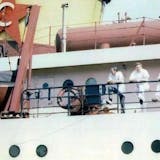Debate. Bargain. Cobble. Wait. Repeat. This is how we build transit in Minnesota.
The C Line rapid bus project, which opens on Saturday, is a great example of both the value of improving transit and the torturously slow path we follow to do it. The C Line will provide cost-effective access to opportunity, address inequity, reduce carbon pollution and improve our economic competitiveness.
Another advantage of bus projects should be that we could build them much faster, compared with rail. But we don't. That's one reason this success story is also a cautionary tale. It's a minor miracle the C Line ever happened. And until the Legislature finally passes a real transportation bill, we will need miracles on a yearly basis.
Debate.
Located in north Minneapolis, the C Line will serve racially concentrated areas of poverty. Such projects are rare. Nationwide, bus transit is neglected generally, but especially where it's needed most.
Neither this project on Penn Avenue, nor the D Line, the other planned project in north Minneapolis, were included in the original rapid bus network proposed by Metro Transit in 2012. Both projects are byproducts of the debate over Bottineau light-rail transit (LRT). North-siders were deeply conflicted about possible routes for Bottineau, including Penn Avenue, where residents had been crying out for better service. But Penn Avenue was the costlier option on a narrow corridor. With the clock running down, a consensus seemed elusive.
Bargain.
Rather than just give in to the county's preferred route, and give up on improving transit through more of the North Side, key leaders made an offer. Mayor R.T. Rybak, City Council Member Don Samuels and Metropolitan Council Member Gary Cunningham said they would support the county's rail alignment, but only as part of a package with the two bus routes that run the whole length of north Minneapolis and into Brooklyn Center.
To its great credit, Metro Transit embraced the offer. Unlike with the Orange Line BRT project on Interstate 35W, when city leaders were accused of "holding the freeway hostage" by insisting on cost-effective bus transit, Gov. Mark Dayton's Met Council added C Line and D Line to the network, and moved them near the top.
Cobble. Wait.
With an agreement in hand, but no money from the Legislature to fund buses, Metro Transit began to slowly cobble together funding over the next five years, mostly from different federal sources. As slow as it has been for C Line to wait for funding, it's nothing compared to the glacial pace of Orange Line BRT. The first half of that project was already built back in 2009 using funds from the Bush administration. It will have been in development for two decades by the time it opens in 2021.


